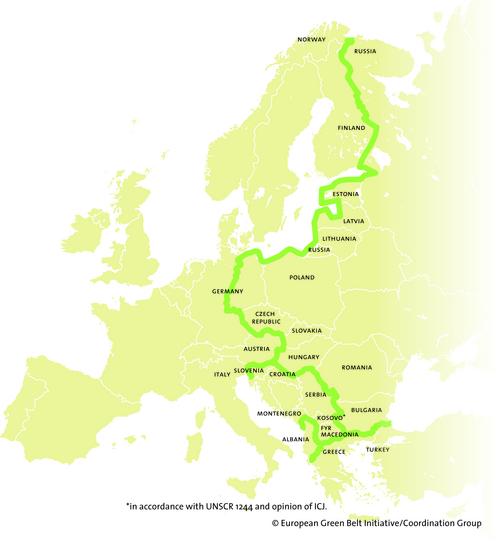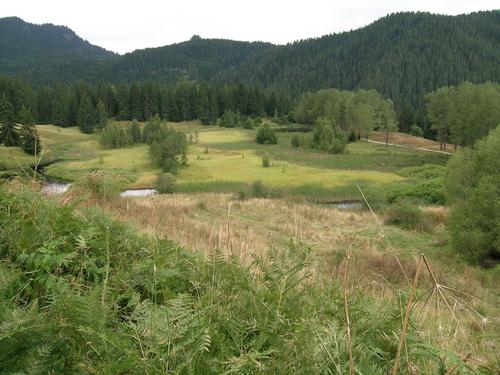++ The fall of the Berlin Wall marks the birth of the European Green Belt ++ Nature conservation along the former Iron Curtain as a Central European peace project ++

Along more than 12,500 kilometres – from the Barents Sea at the Russian-Norwegian border, along the Baltic Coast, through Central Europe and the Balkans to the Black and the Adriatic Sea – the border zone granted nature a pause and has created a zone of life.
© European Green Belt Initiative/Coordination Group
EuroNatur is the regional coordinator of the southernmost section of the Balkan Green Belt. There is a landscape mosaic of untouched forests, enchanted moors and unspoilt mountain landscapes.
© Green BalkansRadolfzell. In celebrating the 30th anniversary of the fall of the Berlin Wall, nature deserves attention, too: The end of the Iron Curtain is at the same time the beginning of one of the continent’s most ambitious nature conservation projects – the European Green Belt. Where barbed wire and spring guns separated neighbouring European countries for decades, conservationists are now cooperating across borders to preserve Europe’s natural heritage.
“In the current crisis of the European Union, in which greed and nationalism overshadow the positive aspects of cooperation, the European Green Belt is a project that exemplifies how integrative European collaboration works,” says Gabriel Schwaderer, Executive Director of EuroNatur. “The European Green Belt is a symbol for the European peace process and one of the continent’s most important biodiversity initiatives.”
This nature conservation initiative aims to preserve the habitats along the former Iron Curtain as a line of life, thereby significantly contributing to the conservation of the continent’s green infrastructure. The former border area between East and West was largely spared intensive human use. Here, forests and swamps, species-rich cultural landscapes as well as pristine mountain and river landscapes form a string of jewels, which are hardly to be found anywhere else in Europe. The European Green Belt provides valuable habitats for a wide range of endangered animal and plant species.
Background information:
The “European Green Belt” stretches over 12,500 kilometres from the Barents Sea to the Black and Adriatic Seas along the former border between East and West as a corridor of habitats with extraordinary biodiversity. The European Green Belt is an international initiative launched in 2003 by EuroNatur together with the German Federal Agency for Nature Conservation, BUND (Friends of the Earth Germany) and the International Union for Conservation of Nature (IUCN). The Green Belt links eight biogeographical regions and 24 states. Here you can find more information: https://www.europeangreenbelt.org
Press contact:
Christian Stielow, Mail: christian.stielow(at)euronatur.org, Tel: +49 (0)7732 92 72 15


